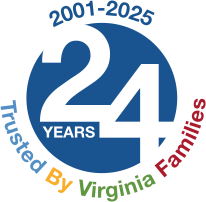What is Medicare?
To qualify for Medicare, an individual must:
- Be at least 65 years of age; or
- Have been eligible for Title II (SSDI, Childhood disability benefits, etc.), or
- Been diagnosed with end-stage renal disease.
What does Medicare cover?
There are several parts to Medicare:
- Part A - Hospital insurance.
- Part B - Health insurance for doctor visits, durable medical equipment, etc.
- Part C - Optional component to Medicare, also known as a Medicare advantage plan. These are private companies approved by Medicare that provide both Part A and B coverage but may also provide additional coverage not provided under "traditional" Medicare, such as dental services.
- Part D - Prescription Drug coverage.
Costs
Part A Medicare is free of charge (for most) and automatic when someone becomes Medicare eligible. Individuals who have not paid enough into Medicare over their working career will have a premium, but this is a tiny group.
Part B carries a monthly premium of $185 per month as of January 2025. This premium is typically deducted from an individual's Title II cash benefit if they receive one.
Parts C and D premiums vary depending on the plan.
Medicare Savings Programs
Medicare savings programs provide extra help to Medicare beneficiaries who have limited income and resources. Several savings programs help cover the costs associated with Medicare. The most common ones are:
- Qualified Medicare Beneficiary (QMB) - pays for Part A deductibles, Part B premiums, and co-payments.
- Specific Low-Income Beneficiary (SLMB) - pays for Part B premium only.
The income and resource guidelines for the Medicare savings program change annually. Please visit Medicare Savings Programs for the most updated information.
Application and Eligibility for Medicare Savings Programs
If someone wants to apply for help from the Medicare savings program, they should contact their local Department of Social Services (DSS) or apply online through Virginia CommonHelp
Not all income counts when determining eligibility, so clients are encouraged to apply even if their income is higher than the income threshold for any given year. The following is disregarded when determining eligibility:
- The first $20 of unearned income
- The first $65 of earned income ($85 if no other income)
- One half of the remaining earned income
Resources Excluded:
- Value of an individual's home
- Home furnishings
- Burial Plots
- Value of one vehicle
Medicare Part D Low-Income Subsidy
The low-income subsidy program can pay Medicare Part D monthly premiums and co-payments for individuals with limited income and resources. For more information, please visit Eligibility for Low-Income Subsidy.
Medicare and Medicaid Dual Eligibles
If an individual is eligible for both Medicaid and Medicare, sometimes called dually eligible, the individual is also eligible to have their Medicare B premiums paid for them via their eligibility for Medicaid.
This article was contributed by Michael Klinger, Work Incentives Specialist for the Virginia Department for Aging and Rehabilitative Services. For more information or any other benefits related questions, contact Michael Klinger at 434-989-5782 or Michael.klinger@dars.virginia.gov.
